
Subscriber Input
Become a member: Subscribe
Solari’s Building Wealth materials are organized to inspire and support your personal strategic and financial planning.

Missing Money
Articles and video discussions of the $21 Trillion dollars missing from the U.S. government
No posts
Subscriber Input

Post your comments and questions for 2013.
You must be a subscriber to make comments.
173 Comments
Comments are closed.
Our mission is to help you live a free and inspired life. This includes building wealth in ways that build real wealth in the wider economy. We believe that personal and family wealth is a critical ingredient of both individual freedom and community, health and well-being.
Nothing on The Solari Report should be taken as individual investment, legal, or medical advice. Anyone seeking investment, legal, medical, or other professional advice for his or her personal situation is advised to seek out a qualified advisor or advisors and provide as much information as possible to the advisor in order that such advisor can take into account all relevant circumstances, objectives, and risks before rendering an opinion as to the appropriate strategy.
Be the first to know about new articles, series and events.

173 Comments
-
The OP is on, as Rappoport would say. Its called “THE RETIREMENT AGENDA: Lifetime income options”. I sit on my company’s 401 k retirement plan committee. I provide input and reactions to new policies being considered. Just this week, I received the following notice from my Plan Provider, a private company which is paid to manage our funds using the T Rowe Price Retirment workplace vehicle (see excerpt below): Our plan provider introduced this quarter a new financial ‘widget’ they are branding as:
The Retirement Agenda: “Lifetime income options”.
CATHERINE: IT WOULD BE MOST HELPFUL IF YOU COULD ASSIST IN FRAMING A RESPONSE AND POST AS TO WHY THIS IS A VERY VERY VERY BAD IDEA. I WOULD LIKE TO PRESENT SUCH A RESPONSE TO MY RETIREMENT PLAN COMMITTEE. READ BELOW TO SEE HOW SLICK THIS NEW OP IS………
REGARDS, A. BINGHAM
Currently living and working Kisumu, Kenya.Action on the retirement agenda in 2012
• Fee disclosure1. DOL to finalize interim final regulations under ERISA §408(b)(2) requiring disclosure of fees, services,
and related information to plan sponsors by covered service providers.2. Guidance (Q&As) to address outstanding issues related to final participant fee disclosure regulations.
• Lifetime income option initiatives
Guidance may address:
1. Interaction of qualification rules with use of annuity investment and distribution options.
2. Plan sponsor fiduciary concerns regarding selecting annuity providers.
3. Showing annuity equivalents on benefit statements.
• Target-date Investments
1. Guidance would provide fiduciary considerations for plan sponsors in selecting target-date investments.
2. Final amendments to qualified default investment alternative (QDIA) regulations and participant fee
disclosure regulations would require enhanced participant disclosures for target-date investment options.
3. Final SEC rule intended to help clarify the meaning of a date in a target-date investment’s name and to
otherwise enhance information provided to those investing in target-date investments.
PROPOSED TIMELINE FOR FEE DISCLOSURE INITIATIVES
• 408(b)(2) – Disclosure from service providers to plan sponsors
Early 2012: Final regulations under ERISA §408(b)(2) requiring disclosure of fees, services
and related information to plan sponsors by covered service providers are expected.
Our review of the interim final rule suggests the new requirements under the interim
final rule are largely consistent with our current fee disclosure practices. However, in
order to meet the more technical requirements of the rule and to enhance the information
provided to plan fiduciaries, T. Rowe Price is in the process of developing a new summary
document. We continue to monitor the DOL’s progress and will incorporate any required
changes made by the final regulations into our report, which will be provided to plan
fiduciaries in advance of the new April 1, 2012, compliance deadline.-
Allison, the IRS is proving more info…
Larry Isaacs and Carol Zimmerman, actuaries with Tax Exempt and Government Entities, will discuss guidance issued earlier this year in response to the Administration’s initiative to encourage lifetime annuity options for retirees. The presentation will include the following topics:
• Revenue Ruling 2012-3, clarifying rules for defined contribution plans that offer lifetime income options,
• Revenue Ruling 2012-4, clarifying rules that apply to rollovers into defined benefit plans to purchase additional annuity benefits,
• Proposed regulations under section 401(a)(9) of the Code, dealing with qualified longevity annuity contracts (“QLACs”), and
• Proposed regulations under section 417(e)(3) of the Code, making it easier to split a benefit between a lifetime annuity and lump sum or other form of benefit subject to section 417(e)(3).
Register at http://ems.intellor.com/?p=204378&do=register&t=71. Upon completion of the registration form, participants will receive detailed access instructions via email.
Date: August 28, 2012
Time:
Eastern Central Mountain Pacific
2:00 p.m. 1:00 p.m. 12:00 p.m. 11:00 a.m.Brad
-
THE RETIREMENT AGENDA: a bit long. I educate participants about their Defined Benefit plan. I am no expert, just a member services representative for a non profit agency. Links did not carry over:
http://www.nirsonline.org/index.php?option=com_content&task=blogcategory&id=69&Itemid=48
http://plansponsor.com/MagazineArticle.aspx?id=6442484795&magazine=6442484884
http://www.nirsonline.org/index.php?option=com_content&task=blogcategory&id=69&Itemid=48The quantity of Defined Benefit plans has been declining for decades. These pensions had been the primary employee retirement savings plan for larger companies. 401(k)s have become the retirement vehicle for many employees.
The book Retirement Heist: How Companies Plunder and Profit from the Nest Eggs of American Workers provides some examples of the switch over and level of benefit. Defined Benefit plans of government employers such as teachers and state employees have also been changing over to 401(k)s.
There is an OP to shift DB’s to DC (including to 401(k) DC) plans.
The new annuity option to be integrated within the 401(k) plan administration appears at an opportune time. Retirement readiness is believed to be at a crisis level for lower income and middle class citizens. A purchase of an annuity contract by an individual taking a lump sum from their IRA, savings, government pension, SEP, 401 (k), etc. is not new. Placing this option within the benefit administration of employers is a effective way to normalize and set an expectation that an annuity is prudent for participants.
The risk of changing the option to a requirement is disturbing.
Significant risks not recognized by providers include economic warfare affecting long term investment return expectations, lack of regulation and enforcement of existing law. Annuity calculation and inflation risk are complex for a participant and their spouse to understand. Employee educational needs may require a variety of issues be coordinated before and during the retirement process. I have not provided any historical reference to annuity defaults.
A few considerations for a participant include their expectation for inflation, whether they expect a spouse or disabled adult child to need a benefit, life expectancy of the spouse, the flexibility to leave a legacy to multiple beneficiaries, whether other assets are available to access during old age for significant purchases or care. Government regulator change and means testing changes.
In the government employee benefits arena, the DB provides an annuity like benefit payment for life. Typically this is administered by the state agency. The cost of and the benefit derived, are administered with broad state legislature oversight and some meddling. Some state constitutions prevent a reduction of an already earned benefit for government plan participants. Liability for
Many states provide a Defined Benefit (DB) plan for teachers, state employees, etc. A typical scenario that allows a state legislature cover to start a new plan for new employees has been experienced with the economic hit states have been experiencing. A state under funds their plan as a budgetary decision during a tight year and/or the state might also experience a negative or low market return year. The unfunded liability goes up and required funding goes up. The unfunded liability can be amortized over ten or twenty years and not discussed in Public Relations attack.Some plans don’t require amortizing the unfunded liability over a certain period of years in the future.
The complexity of a plan makes for an easy target to oversimplify and mislead the public. State legislatures have been shifting out of DB’s and into Defined Contribution plans across the nation over recent years. In Texas, the legislature is bi-
Mercer, the global Human Resources consultant and servers, report covered in Plan Sponsor article suggests U.S. could require an income stream.
Considering these reports, it appears to be an OP because the savings to states is not bearing out.
A key disadvantage of a 401(k) is that the participant can’t participate in a risk pool for longevity. Annuities may create reduced longevity risk but the costs and risks may be higher than the Defined Benefit plans would provide.
The above comments can be used without atributing them to me. Nothing new there but written from my view point.
-Brad Eddins
1. The National Institute on Retirement Security publishes their reports and the DB over 401(k) style DC plan study is on the first page of reports and briefed below:
September 29, 2011, Washington, D.C. – A new study of the retirement plan choice in the public sector finds that defined benefit (DB) pensions are strongly preferred over 401(k)-type defined contribution (DC) individual accounts. The study analyzes seven state retirement systems that offer a choice between DB and DC plans to find that the DB uptake rate ranges from 98 to 75 percent. The percentage of new employees choosing DC plans ranges from 2 to 25 percent for the plans studied.
In recent years, a few states have offered public employees a choice between primary DB and DC plans. The new study, Decisions, Decisions: Retirement Plan Choices for Public Employees and Employers, analyzes the choices made by employees and finds that:
When given the choice between a primary DB or DC plan, public employees overwhelmingly choose the DB pension plan.
DB pensions are more cost efficient than DC accounts due to higher investment returns and longevity risk pooling.
DC accounts lack supplemental benefits such as death and disability protection. These can still be provided, but require extra contributions outside the DC plan which are therefore not deposited into the members’ accounts.
When states look at shifting from a DB pension to DC accounts, such a shift does not close funding shortfalls and can increase retirement costs.
A “hybrid” plan for new employees in Utah provides a unique case study in that it has capped the pension funding risk to the employer and shifted risk to employees.
The seven plans offering DB and DC choice that were analyzed for the study include Colorado Public Employees’ Retirement Association, Florida Retirement System, Montana Public Employee Retirement Administration, North Dakota Public Employees Retirement System, Ohio Public Employees Retirement System, State Teachers Retirement System of Ohio, and South Carolina Retirement Systems. The new hire elections for these plans are summarized below:“Beyond the seven states analyzed that offer DB-DC choice, the experiences of Nebraska and West Virginia offer additional insight,” said report co-author Mark Olleman, consulting actuary and principal with Milliman, Inc. “Both states chose to put new hires in a DC plan, and then later changed to DB. Nebraska offered some employees hired between 1964 and 2003 only a DC plan, but also maintained a DB plan for other employees. Over 20 years, the average investment return in the DB plan was 11 percent, and the average return in the DC plans was between 6 and 7 percent.”
Olleman continued, “West Virginia closed their Teachers’ DB plan to new hires in 1991 in response to funding problems and put all new hires in a DC plan. Unfortunately this did not solve the funding problem, and many teachers found it difficult to retire when relying only on the DC plan. West Virginia performed a study, found a given level of benefits could be funded for a lower cost through a DB plan, and put all teachers hired after July 1, 2005, in the DB plan as a cost-saving measure. So both Nebraska and West Virginia found a DC plan did not achieve their goals and changed from DC to DB.”
Ilana Boivie, report co-author and economist with the National Institute on Retirement Security, said, “The research is clear that public employees highly value their pension benefits and will choose this retirement plan over an individual DC account. These findings are not surprising and are consistent with NIRS’ recent opinion polling earlier that found 83 percent of Americans believe those with pensions are more likely to have a secure retirement.”
Boivie added, “Moreover, employers understand that pensions remain the most cost-effective way to fund a retirement benefit, and that switching from pensions to individual accounts can drive up costs for taxpayers. These economic facts coupled with strong employee preferences for pensions suggests that public employers are unlikely to mimic the trend away from pensions that has occurred in the private sector.”
The full study is available at http://www.nirsonline.org. A webinar is scheduled for September 29, 2011 at 3 PM ET with report authors to present findings. Register at: https://www2.gotomeeting.com/register/820200634. Participant Dial In: (215) 383-1016, Participant Access Code: 477-048-092.
About NIRS
The National Institute on Retirement Security is a not-for-profit, non-partisan organization established to contribute to informed policymaking by fostering a deep understanding of the value of retirement security to employees, employers, and the economy through national research and education programs. Located in Washington, D.C., NIRS has a diverse membership of organizations interested in retirement security including financial services firms, retirement plan sponsors and service providers, and trade associations among others. More information is available http://www.nirsonline.org.
About Milliman
Milliman is among the world’s largest independent actuarial and consulting firms. Founded in 1947 as Milliman & Robertson, the company currently has 53 offices in key locations worldwide. Milliman employs more than 2,500 people. The firm has consulting practices in healthcare, employee benefits, property & casualty insurance, life insurance and financial services. Milliman serves the full spectrum of business,
financial, government, union, education and nonprofit organizations. For further information, visit milliman.com.
The full report and supplemental materials here, and the report in PDF here.
2. OCTOBER 20, 2011, Washington, D.C. – A report issued today finds that New York City’s defined benefit pension plans can deliver the same retirement income at nearly 40% lower cost than a defined contribution 401(k)-type individual account. The report, A Better Bang for New York City’s Buck, finds that defined benefit savings come from three sources:
Superior investment returns. The pooled nature of assets in a defined benefit plan result in higher investment returns, partly based on the lower fees that stem from economies of scale, but also because the assets are professionally-not individually-managed. The City plans’ enhanced investment returns save from 21 percent to 22 percent, according to the report.
Better management of longevity risk. Because pensions pool the longevity risks of a large number of individuals and can determine and plan for mortality on an actuarial basis, New York City’s defined benefit plans save between 10 percent and 13 percent compared to a typical defined contribution plan.
Portfolio diversification. Unlike defined contribution plans, pension assets can be invested for optimal returns. Individuals using 401(k)s, by comparison, are advised to re-balance their investments, downshifting into less risky and lower-returning assets as they age. This ability to maintain portfolio diversity in the City’s defined benefit plans saves from 4 percent to 5 percent.
Download the full report here.The study was conducted by the National Institute on Retirement Security and Pension Trustee Advisors on behalf of the Office of New York City Comptroller John C. Liu. It is based on a similar national report conducted by NIRS, and uses current data from the five New York City retirement systems. The study found that costs associated with traditional pensions range from 36 percent to 38 percent less than 401(k)-type individual accounts.
“These findings are consistent with our national study on the cost efficiencies embedded in pension plans,” said Diane Oakley, NIRS executive director. “The analysis clearly indicates that the qualities inherent in DB plans – particularly the superior investment returns and pooling of risks and assets – fuel their fiscal efficiency. The report provides important insight for policymakers, employers and employees, who are struggling to ensure adequate retirement income with the fewest dollars possible,” Oakley added.
“Our model makes an ‘apples to apples’ calculation of the actual dollar contributions required for a DB and DC plan to achieve the same target retirement benefit,” said William Fornia, report author and president of Pension Trustee Advisors. “The efficiencies of DB plans already are well documented. This report quantifies the magnitude of those efficiencies in New York City.”
“Calls to replace pension plans with 401(k) plans understandably increase when markets have returned poorly over sustained periods,” said Comptroller John C. Liu. “However, as this and other studies show, the defined pension is the most cost efficient vehicle to deliver retirement income security.”
Pension Trustee Advisors conducted the analysis under the direction of founder and president, William B. Fornia, an actuary with 30 years of experience. Fornia also co-authored the earlier national research for NIRS. The model for the research was based on a group of 1,000 newly-hired employees, from each of the five New York City pension plans, including teachers, civil service workers, sanitation workers, police, and fire personnel.
About the National Institute on Retirement Security
The National Institute on Retirement Security, based in Washington, D.C., is a not-for-profit organization established to contribute to informed policymaking by fostering a deep understanding of the value of retirement security to employees, employers, and the economy through national research and education programs. NIRS seeks to encourage the development of public policies that enhance retirement security in America.
About Pension Trustee Advisors
Pension Trustee Advisors provide expertise, education, and customized solutions to trustees, pension fund staff, government entities, attorneys, labor and other pension decision makers. It was founded by William Fornia, a retirement consultant and actuary with more than 30 years of industry experience. Prior to forming PTA, Fornia held senior positions with leading actuarial firms, and also served as corporate actuary for The Boeing Company. More information is available at www. pensiontrusteeadvisors.com.
About the New York City Pension Funds
The New York City Pension Funds include: the New York City Employees’ Retirement System, the Teachers’ Retirement System, the New York City Police Pension Fund, the New York City Fire Department Pension Fund, and the Board of Education Retirement System. This report marks the fourth in a series produced by Comptroller Liu’s Retirement Security NYC initiative. Previous reports: Municipal Employee Compensation in New York City, The $8 Billion Question, and Sustainable or Not? NYC Pension Cost Projections through 2060, are available at http://www.comptroller.nyc.gov/rsnyc/
-
-
Hi Catherine,
Just listend to your solari report on Precious Metal for the first time. I have NOT invested in Gold or Silver before. I remember hearing from another podcast from you to recommend not buying a gold certificate, because they don’t really have to gold holding for that. How would you recommend I buy gold and silver? Thanks.
Julian
-
Julian:
I have two words for you…. Franklin Sanders
http://www.the-moneychanger.com/
I was in the same boat two years ago. After listing to Frank here and reading his daily commentary I decided to buy from him. He beats my local dealers in price every time.
Hope this helps.
Mark
-
Hi Mark,
http://www.the-moneychanger.com
has not worked. Is it down? do you know anything about it?
Julian
-
Thanks Mark. Too bad I didn’t read this. The forum didn’t really notify me of your reply to me. I already bought from Gold Money. I hope they are just as good. It seems that Catherine has mentioned or recommended them in the past. I’ll look in to Franklin Sanders thought. How does he compare to Gold Money? I really like him on the interview with Catherine though.
-
-
-
Allison:
I will take a look. By when do you need input on this?
Catherine
-
Hi Catherine, Solari team, and members.
Catherine, my husband and I have been members for a couple years and have also had the great and beneficial opportunity to consult with you personally last year. We are continually researching and inquiring on methods and tools for preserving and building wealth and after coming across the concept on Infinite Banking, are currently reading BANK ON YOURSELF by Pamela Yellen, and have the book THE BANKING EFFECT arriving any day. Because I’m such an avid listener of the Solari Report and have such great respect for you and your take on any and all matters, I’m wondering if you might share your opinion (if any) on the use of these particular insurance policies as a financial/financing vehicle, as well as part of a tax strategy. Regardless of whether or not you comment, thank you very much for all your invaluable work.
Janet, New Mexico
-
The new Solari Report included mention of the general blog. I had not tried that particular link, just the comments section for each report.
Cool!
Brad -
Not sure where to suggest a news link. Have you seen this? http://news.providencejournal.com/breaking-news/2012/02/providence-hous-5.html
An administrator at the Providence Housing Authority is accusing the director of fraud, seeks whistleblower protection.
-
Radioactive fallout:
I have been following Catherine since Mike Ruppert introduced her to the KPFK dissidents. I have also been aware of the importance of trace minerals ever since I listened to an inspired marketing tape. Its title was “Dead doctors don’t lie”, and it was part of an MLM scam. Still the information was fascinating. Currently I include generous amounts of seaweed in my diet to cover all bets. Check out this link for a solution to radioactive fallout as well as many other problems. http://remineralize.org//blog/magazine/from-chernobyl-to-japan-treating-radiation-sickness-with-rock-dust
Comments are closed.






























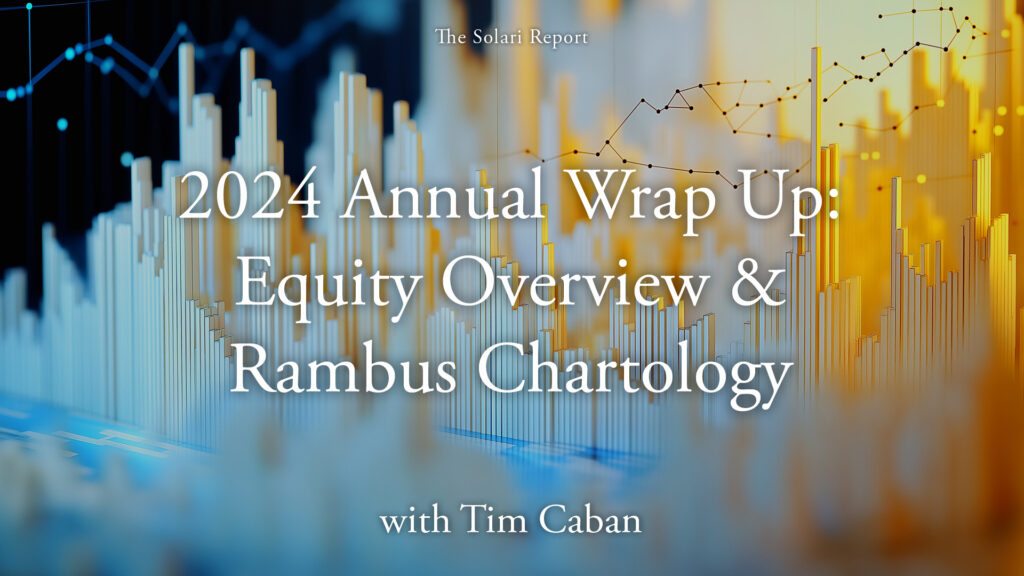




















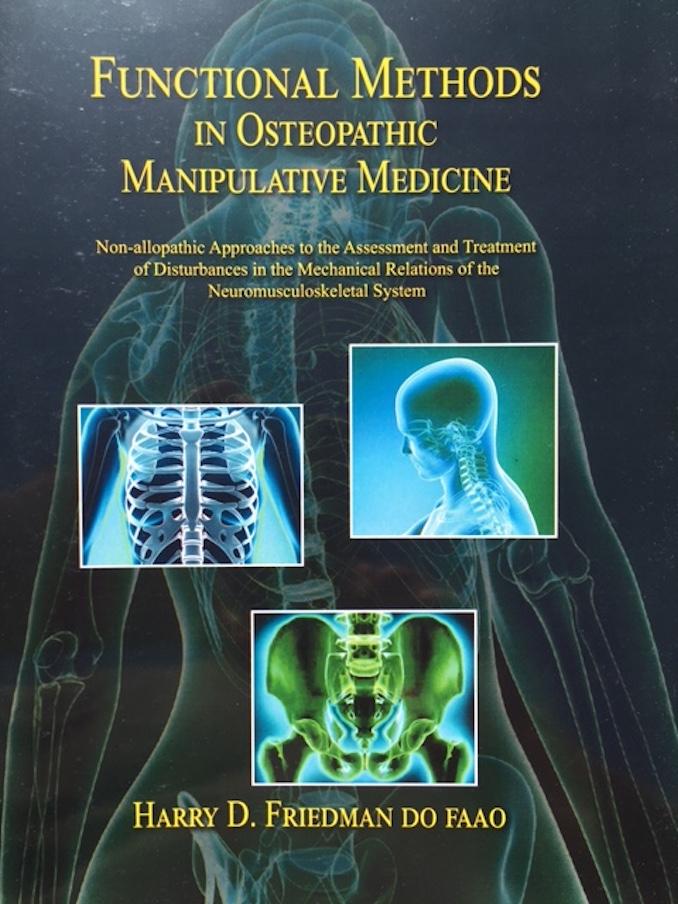























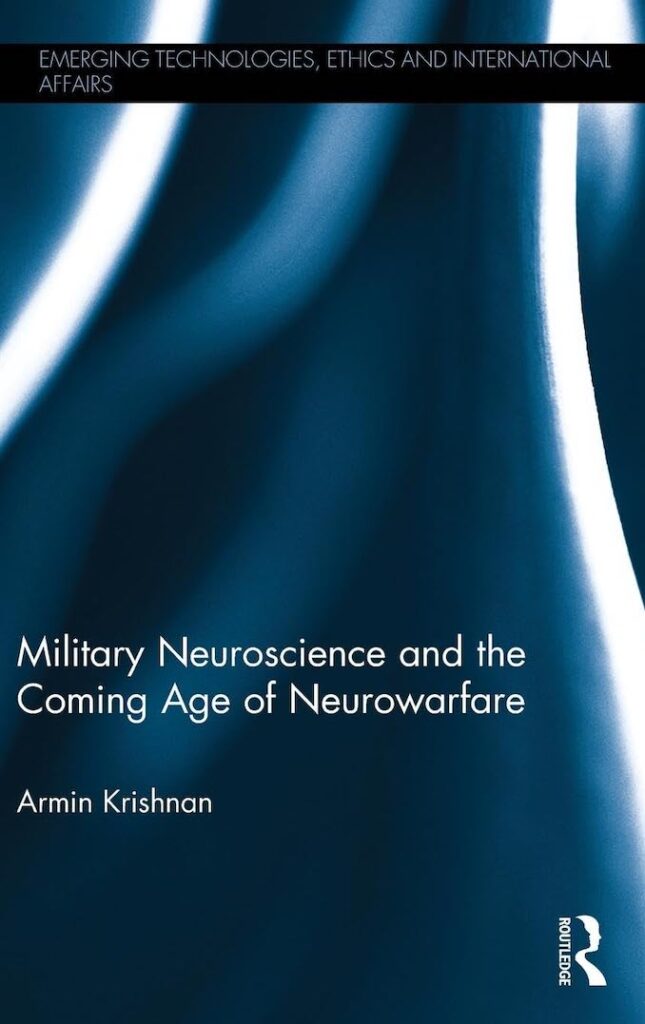
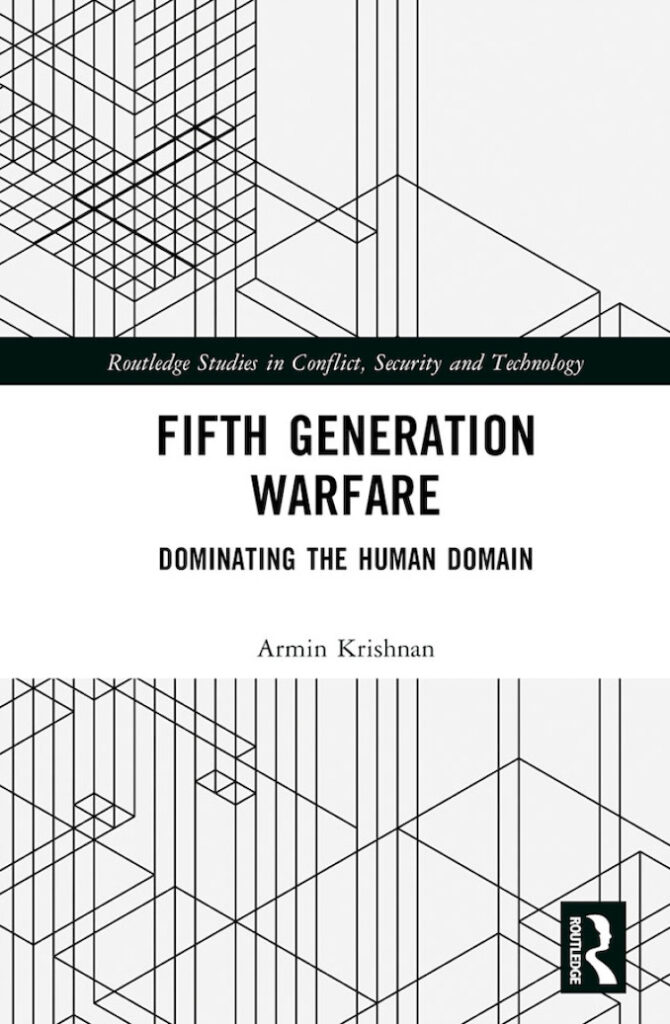
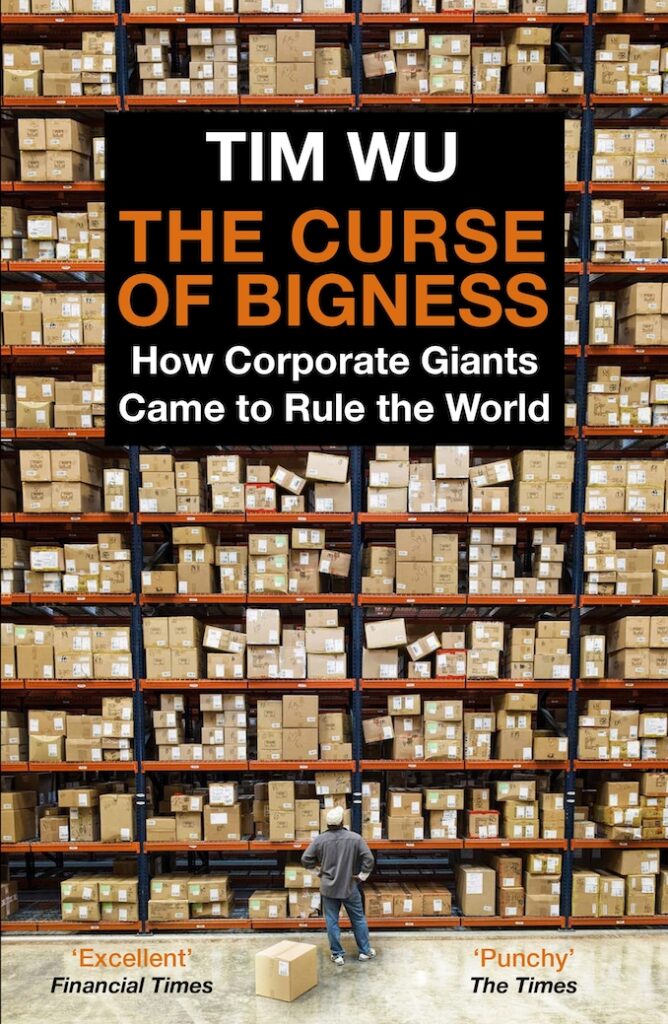
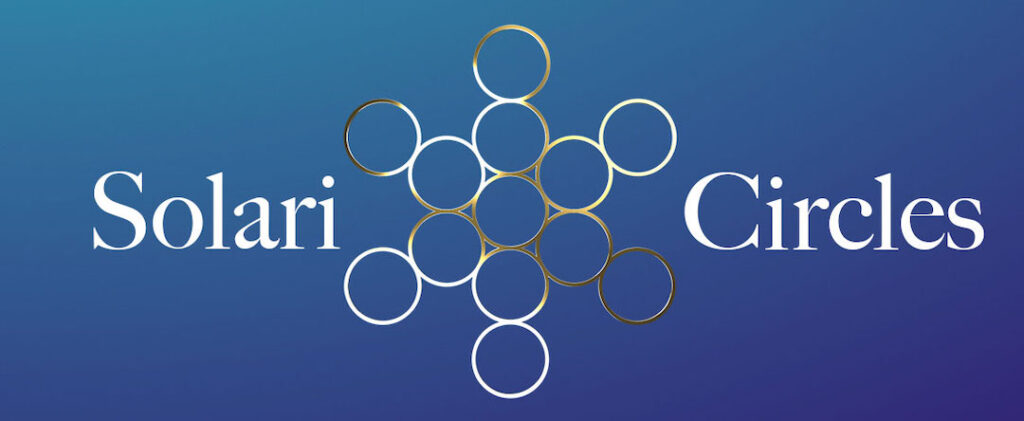












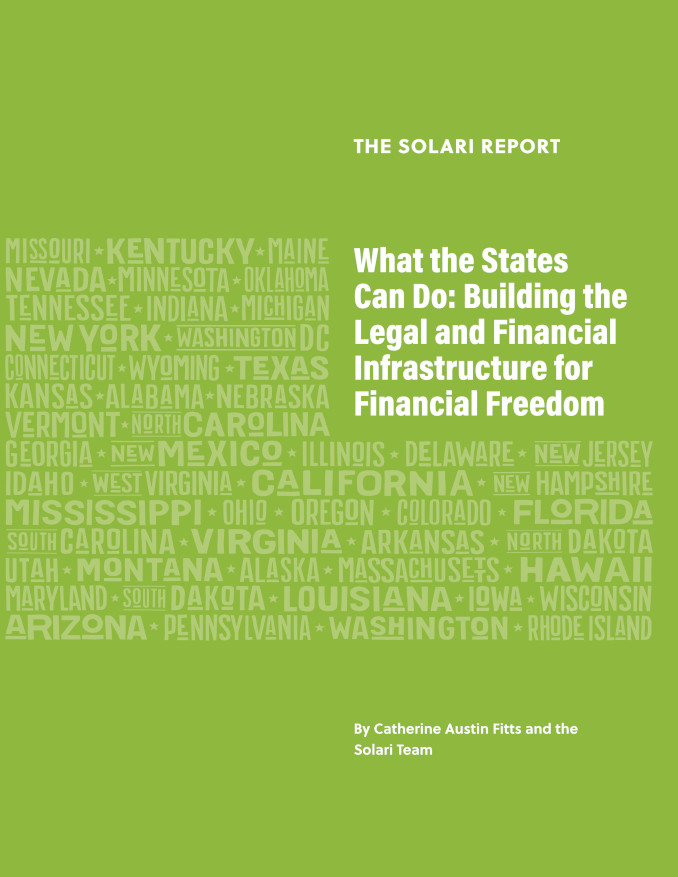
The OP is on, as Rappoport would say. Its called “THE RETIREMENT AGENDA: Lifetime income options”. I sit on my company’s 401 k retirement plan committee. I provide input and reactions to new policies being considered. Just this week, I received the following notice from my Plan Provider, a private company which is paid to manage our funds using the T Rowe Price Retirment workplace vehicle (see excerpt below): Our plan provider introduced this quarter a new financial ‘widget’ they are branding as:
The Retirement Agenda: “Lifetime income options”.
CATHERINE: IT WOULD BE MOST HELPFUL IF YOU COULD ASSIST IN FRAMING A RESPONSE AND POST AS TO WHY THIS IS A VERY VERY VERY BAD IDEA. I WOULD LIKE TO PRESENT SUCH A RESPONSE TO MY RETIREMENT PLAN COMMITTEE. READ BELOW TO SEE HOW SLICK THIS NEW OP IS………
REGARDS, A. BINGHAM
Currently living and working Kisumu, Kenya.
Action on the retirement agenda in 2012
• Fee disclosure
1. DOL to finalize interim final regulations under ERISA §408(b)(2) requiring disclosure of fees, services,
and related information to plan sponsors by covered service providers.
2. Guidance (Q&As) to address outstanding issues related to final participant fee disclosure regulations.
• Lifetime income option initiatives
Guidance may address:
1. Interaction of qualification rules with use of annuity investment and distribution options.
2. Plan sponsor fiduciary concerns regarding selecting annuity providers.
3. Showing annuity equivalents on benefit statements.
• Target-date Investments
1. Guidance would provide fiduciary considerations for plan sponsors in selecting target-date investments.
2. Final amendments to qualified default investment alternative (QDIA) regulations and participant fee
disclosure regulations would require enhanced participant disclosures for target-date investment options.
3. Final SEC rule intended to help clarify the meaning of a date in a target-date investment’s name and to
otherwise enhance information provided to those investing in target-date investments.
PROPOSED TIMELINE FOR FEE DISCLOSURE INITIATIVES
• 408(b)(2) – Disclosure from service providers to plan sponsors
Early 2012: Final regulations under ERISA §408(b)(2) requiring disclosure of fees, services
and related information to plan sponsors by covered service providers are expected.
Our review of the interim final rule suggests the new requirements under the interim
final rule are largely consistent with our current fee disclosure practices. However, in
order to meet the more technical requirements of the rule and to enhance the information
provided to plan fiduciaries, T. Rowe Price is in the process of developing a new summary
document. We continue to monitor the DOL’s progress and will incorporate any required
changes made by the final regulations into our report, which will be provided to plan
fiduciaries in advance of the new April 1, 2012, compliance deadline.
Allison, the IRS is proving more info…
Larry Isaacs and Carol Zimmerman, actuaries with Tax Exempt and Government Entities, will discuss guidance issued earlier this year in response to the Administration’s initiative to encourage lifetime annuity options for retirees. The presentation will include the following topics:
• Revenue Ruling 2012-3, clarifying rules for defined contribution plans that offer lifetime income options,
• Revenue Ruling 2012-4, clarifying rules that apply to rollovers into defined benefit plans to purchase additional annuity benefits,
• Proposed regulations under section 401(a)(9) of the Code, dealing with qualified longevity annuity contracts (“QLACs”), and
• Proposed regulations under section 417(e)(3) of the Code, making it easier to split a benefit between a lifetime annuity and lump sum or other form of benefit subject to section 417(e)(3).
Register at http://ems.intellor.com/?p=204378&do=register&t=71. Upon completion of the registration form, participants will receive detailed access instructions via email.
Date: August 28, 2012
Time:
Eastern Central Mountain Pacific
2:00 p.m. 1:00 p.m. 12:00 p.m. 11:00 a.m.
Brad
THE RETIREMENT AGENDA: a bit long. I educate participants about their Defined Benefit plan. I am no expert, just a member services representative for a non profit agency. Links did not carry over:
http://www.nirsonline.org/index.php?option=com_content&task=blogcategory&id=69&Itemid=48
http://plansponsor.com/MagazineArticle.aspx?id=6442484795&magazine=6442484884
http://www.nirsonline.org/index.php?option=com_content&task=blogcategory&id=69&Itemid=48
The quantity of Defined Benefit plans has been declining for decades. These pensions had been the primary employee retirement savings plan for larger companies. 401(k)s have become the retirement vehicle for many employees.
The book Retirement Heist: How Companies Plunder and Profit from the Nest Eggs of American Workers provides some examples of the switch over and level of benefit. Defined Benefit plans of government employers such as teachers and state employees have also been changing over to 401(k)s.
There is an OP to shift DB’s to DC (including to 401(k) DC) plans.
The new annuity option to be integrated within the 401(k) plan administration appears at an opportune time. Retirement readiness is believed to be at a crisis level for lower income and middle class citizens. A purchase of an annuity contract by an individual taking a lump sum from their IRA, savings, government pension, SEP, 401 (k), etc. is not new. Placing this option within the benefit administration of employers is a effective way to normalize and set an expectation that an annuity is prudent for participants.
The risk of changing the option to a requirement is disturbing.
Significant risks not recognized by providers include economic warfare affecting long term investment return expectations, lack of regulation and enforcement of existing law. Annuity calculation and inflation risk are complex for a participant and their spouse to understand. Employee educational needs may require a variety of issues be coordinated before and during the retirement process. I have not provided any historical reference to annuity defaults.
A few considerations for a participant include their expectation for inflation, whether they expect a spouse or disabled adult child to need a benefit, life expectancy of the spouse, the flexibility to leave a legacy to multiple beneficiaries, whether other assets are available to access during old age for significant purchases or care. Government regulator change and means testing changes.
In the government employee benefits arena, the DB provides an annuity like benefit payment for life. Typically this is administered by the state agency. The cost of and the benefit derived, are administered with broad state legislature oversight and some meddling. Some state constitutions prevent a reduction of an already earned benefit for government plan participants. Liability for
Many states provide a Defined Benefit (DB) plan for teachers, state employees, etc. A typical scenario that allows a state legislature cover to start a new plan for new employees has been experienced with the economic hit states have been experiencing. A state under funds their plan as a budgetary decision during a tight year and/or the state might also experience a negative or low market return year. The unfunded liability goes up and required funding goes up. The unfunded liability can be amortized over ten or twenty years and not discussed in Public Relations attack.Some plans don’t require amortizing the unfunded liability over a certain period of years in the future.
The complexity of a plan makes for an easy target to oversimplify and mislead the public. State legislatures have been shifting out of DB’s and into Defined Contribution plans across the nation over recent years. In Texas, the legislature is bi-
Mercer, the global Human Resources consultant and servers, report covered in Plan Sponsor article suggests U.S. could require an income stream.
Considering these reports, it appears to be an OP because the savings to states is not bearing out.
A key disadvantage of a 401(k) is that the participant can’t participate in a risk pool for longevity. Annuities may create reduced longevity risk but the costs and risks may be higher than the Defined Benefit plans would provide.
The above comments can be used without atributing them to me. Nothing new there but written from my view point.
-Brad Eddins
1. The National Institute on Retirement Security publishes their reports and the DB over 401(k) style DC plan study is on the first page of reports and briefed below:
September 29, 2011, Washington, D.C. – A new study of the retirement plan choice in the public sector finds that defined benefit (DB) pensions are strongly preferred over 401(k)-type defined contribution (DC) individual accounts. The study analyzes seven state retirement systems that offer a choice between DB and DC plans to find that the DB uptake rate ranges from 98 to 75 percent. The percentage of new employees choosing DC plans ranges from 2 to 25 percent for the plans studied.
In recent years, a few states have offered public employees a choice between primary DB and DC plans. The new study, Decisions, Decisions: Retirement Plan Choices for Public Employees and Employers, analyzes the choices made by employees and finds that:
When given the choice between a primary DB or DC plan, public employees overwhelmingly choose the DB pension plan.
DB pensions are more cost efficient than DC accounts due to higher investment returns and longevity risk pooling.
DC accounts lack supplemental benefits such as death and disability protection. These can still be provided, but require extra contributions outside the DC plan which are therefore not deposited into the members’ accounts.
When states look at shifting from a DB pension to DC accounts, such a shift does not close funding shortfalls and can increase retirement costs.
A “hybrid” plan for new employees in Utah provides a unique case study in that it has capped the pension funding risk to the employer and shifted risk to employees.
The seven plans offering DB and DC choice that were analyzed for the study include Colorado Public Employees’ Retirement Association, Florida Retirement System, Montana Public Employee Retirement Administration, North Dakota Public Employees Retirement System, Ohio Public Employees Retirement System, State Teachers Retirement System of Ohio, and South Carolina Retirement Systems. The new hire elections for these plans are summarized below:
“Beyond the seven states analyzed that offer DB-DC choice, the experiences of Nebraska and West Virginia offer additional insight,” said report co-author Mark Olleman, consulting actuary and principal with Milliman, Inc. “Both states chose to put new hires in a DC plan, and then later changed to DB. Nebraska offered some employees hired between 1964 and 2003 only a DC plan, but also maintained a DB plan for other employees. Over 20 years, the average investment return in the DB plan was 11 percent, and the average return in the DC plans was between 6 and 7 percent.”
Olleman continued, “West Virginia closed their Teachers’ DB plan to new hires in 1991 in response to funding problems and put all new hires in a DC plan. Unfortunately this did not solve the funding problem, and many teachers found it difficult to retire when relying only on the DC plan. West Virginia performed a study, found a given level of benefits could be funded for a lower cost through a DB plan, and put all teachers hired after July 1, 2005, in the DB plan as a cost-saving measure. So both Nebraska and West Virginia found a DC plan did not achieve their goals and changed from DC to DB.”
Ilana Boivie, report co-author and economist with the National Institute on Retirement Security, said, “The research is clear that public employees highly value their pension benefits and will choose this retirement plan over an individual DC account. These findings are not surprising and are consistent with NIRS’ recent opinion polling earlier that found 83 percent of Americans believe those with pensions are more likely to have a secure retirement.”
Boivie added, “Moreover, employers understand that pensions remain the most cost-effective way to fund a retirement benefit, and that switching from pensions to individual accounts can drive up costs for taxpayers. These economic facts coupled with strong employee preferences for pensions suggests that public employers are unlikely to mimic the trend away from pensions that has occurred in the private sector.”
The full study is available at http://www.nirsonline.org. A webinar is scheduled for September 29, 2011 at 3 PM ET with report authors to present findings. Register at: https://www2.gotomeeting.com/register/820200634. Participant Dial In: (215) 383-1016, Participant Access Code: 477-048-092.
About NIRS
The National Institute on Retirement Security is a not-for-profit, non-partisan organization established to contribute to informed policymaking by fostering a deep understanding of the value of retirement security to employees, employers, and the economy through national research and education programs. Located in Washington, D.C., NIRS has a diverse membership of organizations interested in retirement security including financial services firms, retirement plan sponsors and service providers, and trade associations among others. More information is available http://www.nirsonline.org.
About Milliman
Milliman is among the world’s largest independent actuarial and consulting firms. Founded in 1947 as Milliman & Robertson, the company currently has 53 offices in key locations worldwide. Milliman employs more than 2,500 people. The firm has consulting practices in healthcare, employee benefits, property & casualty insurance, life insurance and financial services. Milliman serves the full spectrum of business,
financial, government, union, education and nonprofit organizations. For further information, visit milliman.com.
The full report and supplemental materials here, and the report in PDF here.
2. OCTOBER 20, 2011, Washington, D.C. – A report issued today finds that New York City’s defined benefit pension plans can deliver the same retirement income at nearly 40% lower cost than a defined contribution 401(k)-type individual account. The report, A Better Bang for New York City’s Buck, finds that defined benefit savings come from three sources:
Superior investment returns. The pooled nature of assets in a defined benefit plan result in higher investment returns, partly based on the lower fees that stem from economies of scale, but also because the assets are professionally-not individually-managed. The City plans’ enhanced investment returns save from 21 percent to 22 percent, according to the report.
Better management of longevity risk. Because pensions pool the longevity risks of a large number of individuals and can determine and plan for mortality on an actuarial basis, New York City’s defined benefit plans save between 10 percent and 13 percent compared to a typical defined contribution plan.
Portfolio diversification. Unlike defined contribution plans, pension assets can be invested for optimal returns. Individuals using 401(k)s, by comparison, are advised to re-balance their investments, downshifting into less risky and lower-returning assets as they age. This ability to maintain portfolio diversity in the City’s defined benefit plans saves from 4 percent to 5 percent.
Download the full report here.
The study was conducted by the National Institute on Retirement Security and Pension Trustee Advisors on behalf of the Office of New York City Comptroller John C. Liu. It is based on a similar national report conducted by NIRS, and uses current data from the five New York City retirement systems. The study found that costs associated with traditional pensions range from 36 percent to 38 percent less than 401(k)-type individual accounts.
“These findings are consistent with our national study on the cost efficiencies embedded in pension plans,” said Diane Oakley, NIRS executive director. “The analysis clearly indicates that the qualities inherent in DB plans – particularly the superior investment returns and pooling of risks and assets – fuel their fiscal efficiency. The report provides important insight for policymakers, employers and employees, who are struggling to ensure adequate retirement income with the fewest dollars possible,” Oakley added.
“Our model makes an ‘apples to apples’ calculation of the actual dollar contributions required for a DB and DC plan to achieve the same target retirement benefit,” said William Fornia, report author and president of Pension Trustee Advisors. “The efficiencies of DB plans already are well documented. This report quantifies the magnitude of those efficiencies in New York City.”
“Calls to replace pension plans with 401(k) plans understandably increase when markets have returned poorly over sustained periods,” said Comptroller John C. Liu. “However, as this and other studies show, the defined pension is the most cost efficient vehicle to deliver retirement income security.”
Pension Trustee Advisors conducted the analysis under the direction of founder and president, William B. Fornia, an actuary with 30 years of experience. Fornia also co-authored the earlier national research for NIRS. The model for the research was based on a group of 1,000 newly-hired employees, from each of the five New York City pension plans, including teachers, civil service workers, sanitation workers, police, and fire personnel.
About the National Institute on Retirement Security
The National Institute on Retirement Security, based in Washington, D.C., is a not-for-profit organization established to contribute to informed policymaking by fostering a deep understanding of the value of retirement security to employees, employers, and the economy through national research and education programs. NIRS seeks to encourage the development of public policies that enhance retirement security in America.
About Pension Trustee Advisors
Pension Trustee Advisors provide expertise, education, and customized solutions to trustees, pension fund staff, government entities, attorneys, labor and other pension decision makers. It was founded by William Fornia, a retirement consultant and actuary with more than 30 years of industry experience. Prior to forming PTA, Fornia held senior positions with leading actuarial firms, and also served as corporate actuary for The Boeing Company. More information is available at www. pensiontrusteeadvisors.com.
About the New York City Pension Funds
The New York City Pension Funds include: the New York City Employees’ Retirement System, the Teachers’ Retirement System, the New York City Police Pension Fund, the New York City Fire Department Pension Fund, and the Board of Education Retirement System. This report marks the fourth in a series produced by Comptroller Liu’s Retirement Security NYC initiative. Previous reports: Municipal Employee Compensation in New York City, The $8 Billion Question, and Sustainable or Not? NYC Pension Cost Projections through 2060, are available at http://www.comptroller.nyc.gov/rsnyc/
Hi Catherine,
Just listend to your solari report on Precious Metal for the first time. I have NOT invested in Gold or Silver before. I remember hearing from another podcast from you to recommend not buying a gold certificate, because they don’t really have to gold holding for that. How would you recommend I buy gold and silver? Thanks.
Julian
Julian:
I have two words for you…. Franklin Sanders
http://www.the-moneychanger.com/
I was in the same boat two years ago. After listing to Frank here and reading his daily commentary I decided to buy from him. He beats my local dealers in price every time.
Hope this helps.
Mark
Hi Mark,
http://www.the-moneychanger.com
has not worked. Is it down? do you know anything about it?
Julian
Thanks Mark. Too bad I didn’t read this. The forum didn’t really notify me of your reply to me. I already bought from Gold Money. I hope they are just as good. It seems that Catherine has mentioned or recommended them in the past. I’ll look in to Franklin Sanders thought. How does he compare to Gold Money? I really like him on the interview with Catherine though.
Allison:
I will take a look. By when do you need input on this?
Catherine
Hi Catherine, Solari team, and members.
Catherine, my husband and I have been members for a couple years and have also had the great and beneficial opportunity to consult with you personally last year. We are continually researching and inquiring on methods and tools for preserving and building wealth and after coming across the concept on Infinite Banking, are currently reading BANK ON YOURSELF by Pamela Yellen, and have the book THE BANKING EFFECT arriving any day. Because I’m such an avid listener of the Solari Report and have such great respect for you and your take on any and all matters, I’m wondering if you might share your opinion (if any) on the use of these particular insurance policies as a financial/financing vehicle, as well as part of a tax strategy. Regardless of whether or not you comment, thank you very much for all your invaluable work.
Janet, New Mexico
The new Solari Report included mention of the general blog. I had not tried that particular link, just the comments section for each report.
Cool!
Brad
Not sure where to suggest a news link. Have you seen this? http://news.providencejournal.com/breaking-news/2012/02/providence-hous-5.html
An administrator at the Providence Housing Authority is accusing the director of fraud, seeks whistleblower protection.
Radioactive fallout:
I have been following Catherine since Mike Ruppert introduced her to the KPFK dissidents. I have also been aware of the importance of trace minerals ever since I listened to an inspired marketing tape. Its title was “Dead doctors don’t lie”, and it was part of an MLM scam. Still the information was fascinating. Currently I include generous amounts of seaweed in my diet to cover all bets. Check out this link for a solution to radioactive fallout as well as many other problems. http://remineralize.org//blog/magazine/from-chernobyl-to-japan-treating-radiation-sickness-with-rock-dust